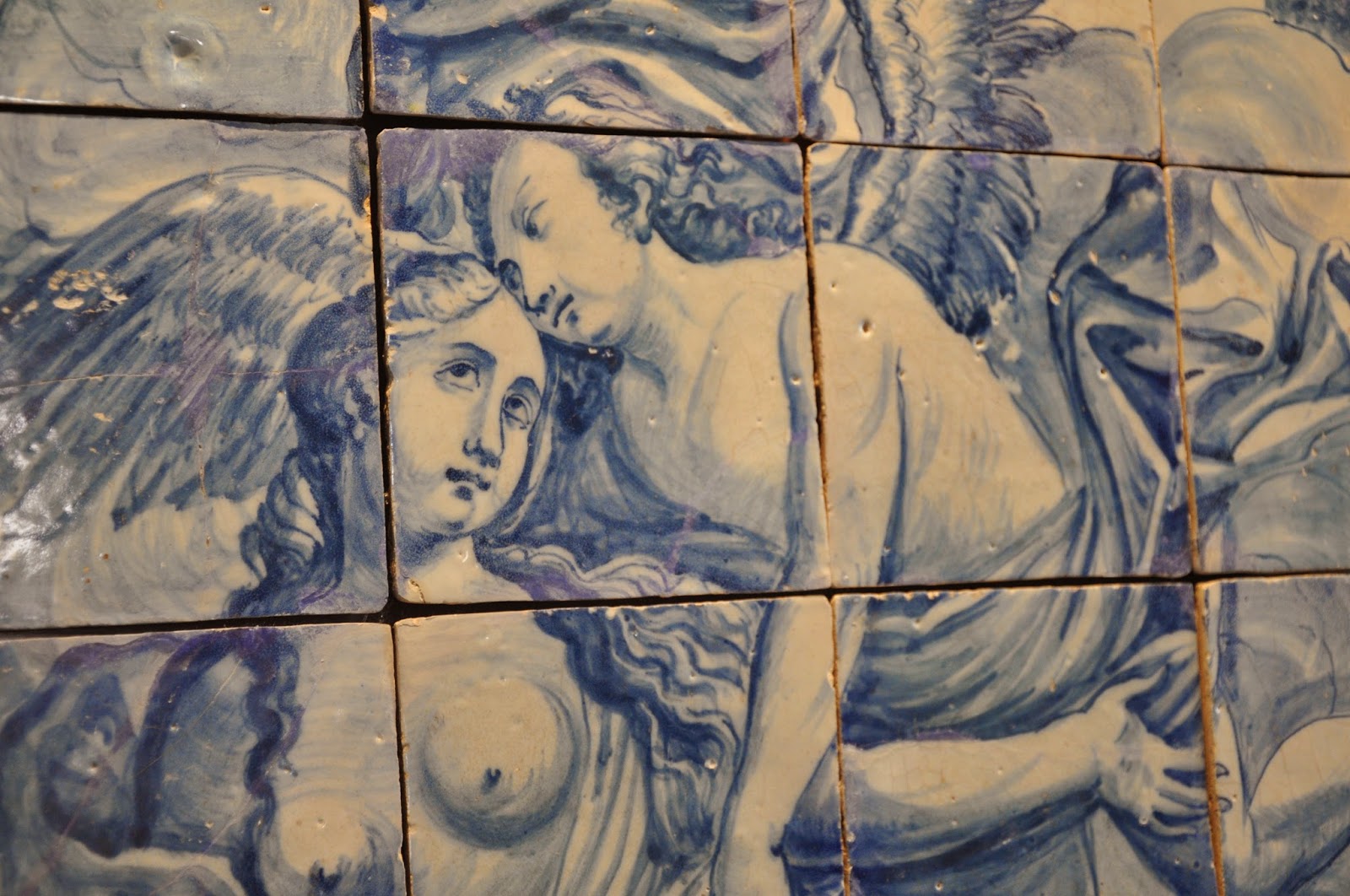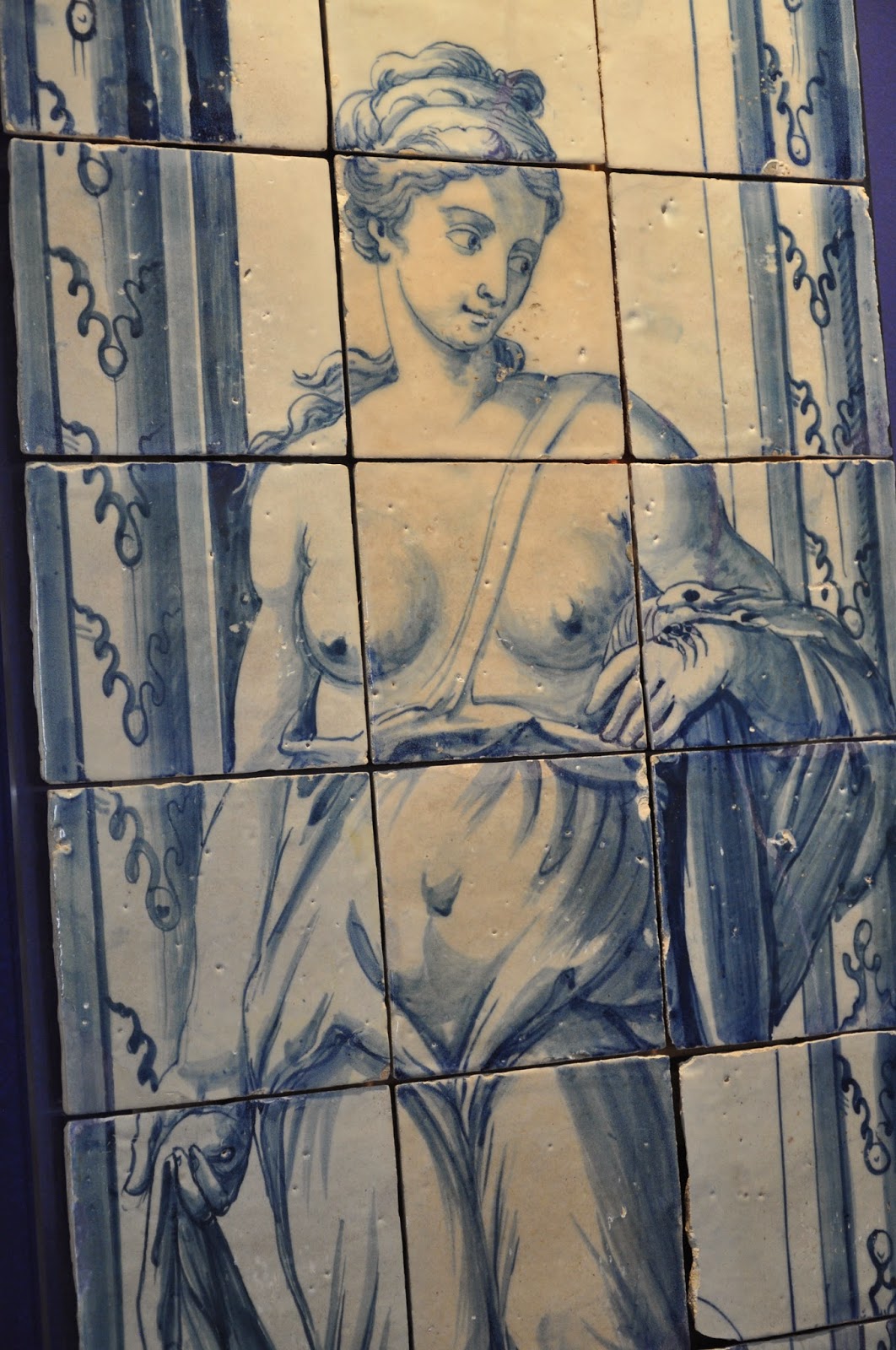I hadn't been to Mãe d'Agua Reservoir for quite a while because of no temporary exhibitions being held there (or so I believed). The fact that an 18th century water associated glazed tile exhibition has been in display since last year came as a surprise, once I didn't recall having heard of it nor seen any reference to it in the media.

The reservoir's interior is exquisite yet sober with side arcades, a water cistern and a cascade like fountain. It's almost unimaginable to think that it was planned and built in 1752 to collect the water from the Aqueduct and have it later distributed.

The various glazed tile panels selected for this exhibition were said to aim at disclosing the numerous perspectives of the use of water from religion to myth and daily life to historical events related to the capital city.
I started by walking along the arcade on the left hand side and the first tile I came across had a clear religious connotation - Baptism and is believed to date back to the early seventeenth century.
The next one, also believed to date back to 1730-1750, depicted Christ and Saint John Baptist.

If the first glazed tile panels were in the traditional white and blue the third one presented a rather different approach as far as composition and colour is concerned, once the two distinct tree shaped frames incorporated the green and a slightly purple-like colour.

The departure of Mary Magdalene glazed tile panel was quite interesting taking into account the legend by Jacopo de Varezze (1230-1298), Legenda Aurea therewith associated in which Mary Magdalene, her sister Martha and her brother Lazarus having been expelled from Palestine were placed in a fragile boat without oars and sail (despite being represented in the panel) to die at sea miraculously escape and safely reach the port of Marseille under the guidance of an angel.


The Sea Nymph Galatea


Mythological scenes dating back to 1730-1750 used as a pretext to represent female nakedness.

Seascapes, which are said to have been very popular throughout the baroque period.

Panel depicting a battle, more precisely an attack to a fortress - 1730-175

Glazed tile panel depicting an era of coded gestures and secret speech language in which fans were ladies' weapons of choice and the background scene evoked what no longer was - 1730-1750

Ladies in the garden dating back to 1720-1745

(To be continued)


















No comments:
Post a Comment